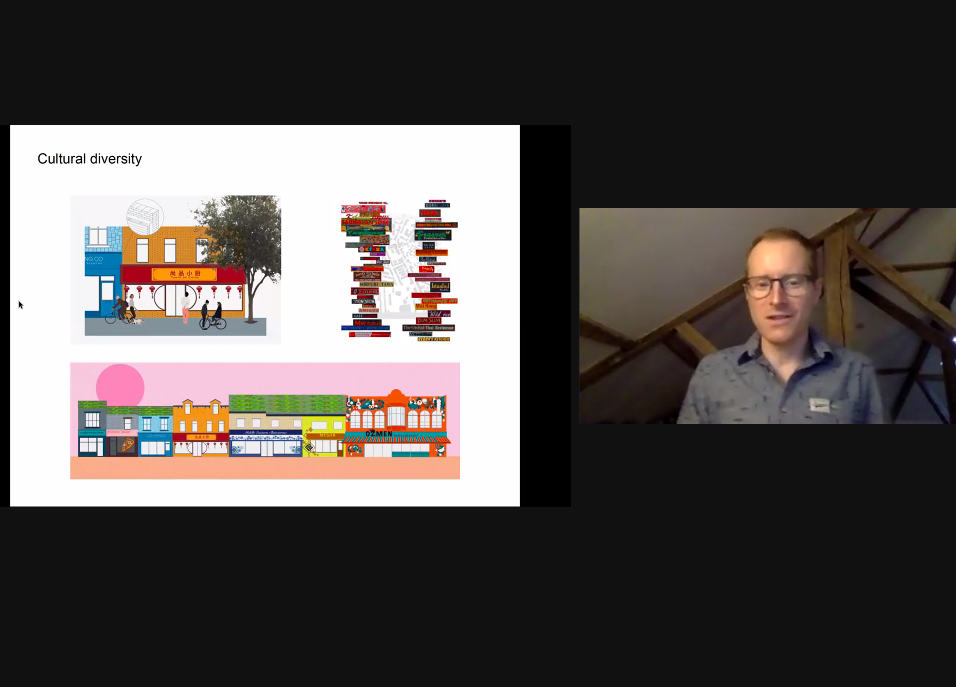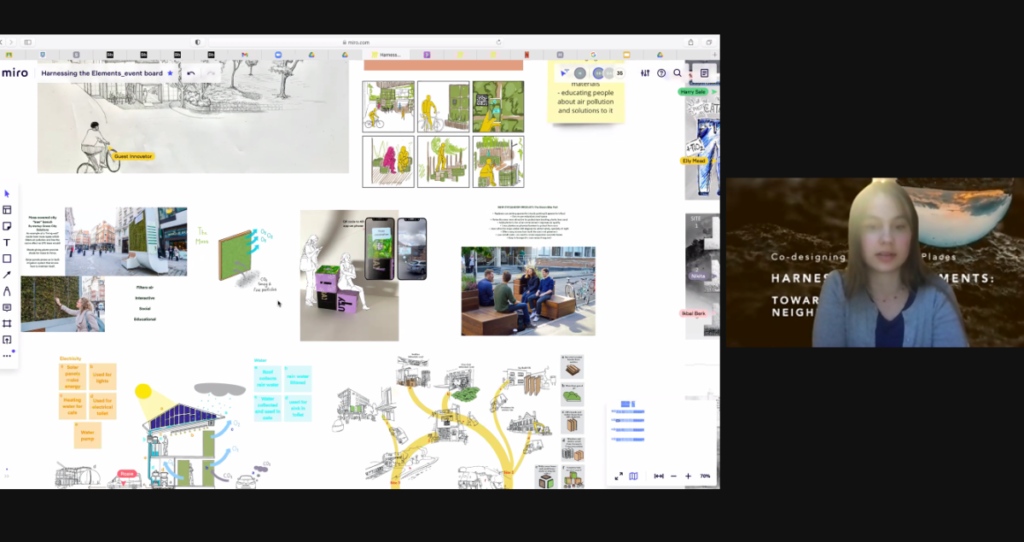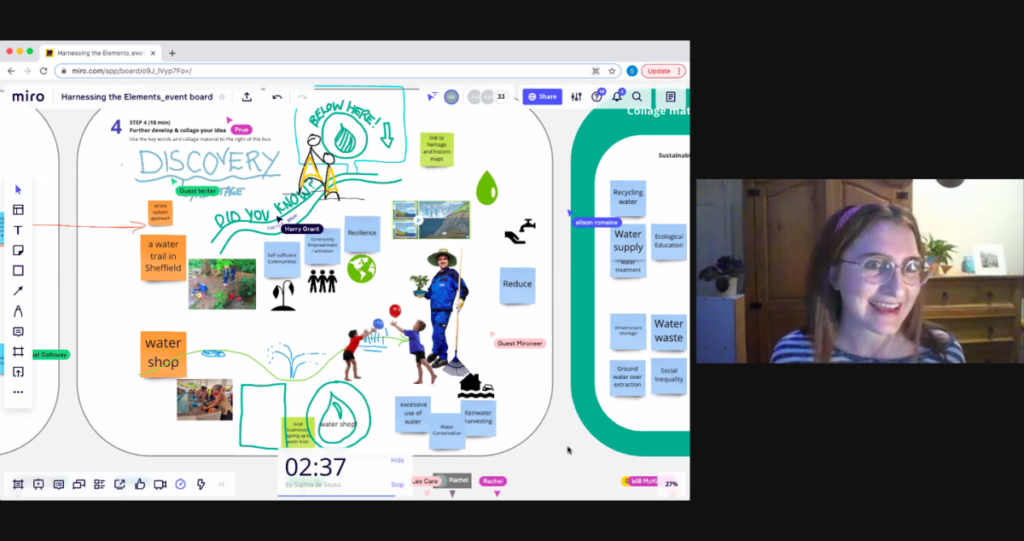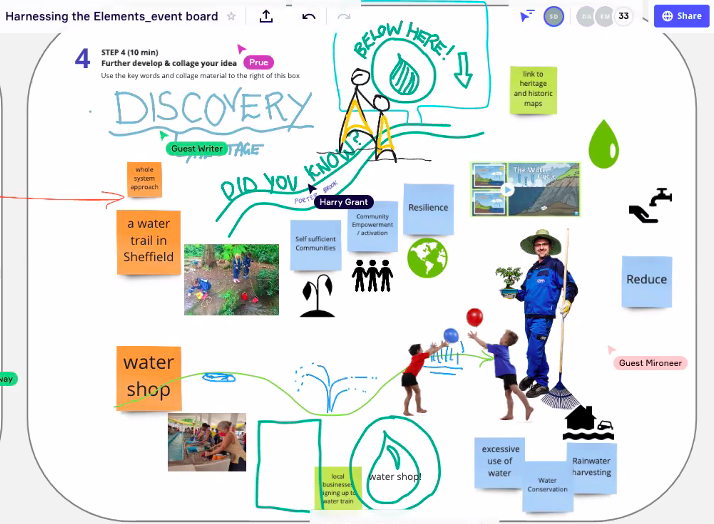Written by:
Last Thursday evening we gathered for Harnessing the Elements, Towards Zero-Carbon Neighbourhoods, and spent a fast-paced 90 minutes working with students, practitioners, educators and community activists exploring the potential to use the universal elements, air, earth fire and water as a route to activating local people as influencers and protagonists in moving us towards zero-carbon neighbourhoods.
This event, in partnership with The University of Sheffield Architecture School’s Live Works and co-designed with lecturer, practising architect and long-time Glass-House Enabler Leo Care, was the third in our 2021/21 Glass-House WEdesign event series Co-designing Sustainable Neighbourhoods. Second-year students and tutors from the University of Sheffield’s BA in Architecture programme worked with us to co-design and co-facilitate the event.

Like our other events in this series, this was a space to bring a range of different voices and perspectives together to explore the themes of sustainability, place quality and equality, and the challenges and opportunities of enabling collaborative design in this socially distanced time of Covid.
Our event kicked off in the context of student projects based in the London Road area of Sheffield. The students’ challenge had been to design a kiosk or pavilion using one of the universal elements as a means of engaging local people in a conversation about the climate emergency. Using their work and creative ideas as prompts for conversation, we broke out into groups to further explore the potential for using air, earth, fire and water as catalysts for mobilising people and organisations in shaping places with a zero-carbon agenda. Each group of student facilitators, tutors and workshop event participants worked together to formulate ideas and co-design engagement activities with this objective. The propositions that emerged were both inspired and inspiring.
Air
This group started their conversation with the idea of installing moss panels on buildings around the city centre, to help improve air quality. They acknowledged that this would be only a temporary fix unless the issue of car emissions were tackled first, and that drivers, the council and local community groups would need to be involved in the project to make it work in the long term. The idea of enlarging allotments and green spaces was also raised as a way to help boost the air quality and increase the amount of time communities spend in green spaces.
Earth

Local food production and providing food for those who need it was the main focus for the Earth collective. The first step would be to find empty spaces and derelict sites to grow, such as old churchyards and car parks. Window boxes in neighbourhoods could also be used and could act as a way to raise awareness and to get more households involved in and excited by growing. They could also really improve streetscapes, being both visually interesting and playful. Having identified the rubbish and waste produced by takeaways as a core problem in sustainability terms, they also suggested that both the restaurants and their patrons would be one of the key audiences to engage, and suggested coming up with a scheme to use takeaway waste to make compost, which could further support collaborative growing efforts.
Fire
This group focused on energy production and consumption, and discussed algae biofuel farming and creating a bio-diesel education centre to help create energy and fuel for local communities. The Bus2grid scheme, a project that provides sustainable transport for the public, also came up in the conversation as something to explore more and build on. They currently have 28 e-buses which are being enabled to charge and export energy – which is called bi-directional charging. This process is managed by an aggregation platform that enables the e-bus batteries to interact with the energy system.
Water

Merging heritage and waterways was a clear area of interest and focus for the water group. They explored creating a scheme that local businesses could sign up to, that would combine awareness-raising and a commitment to a more sustainable approach to water management and usage. One idea developed was to place plaques onto local establishments and make a walking map of sorts that encourages the public to learn about the history of water in Sheffield, and to connect with the waterways above and below ground. The team also wanted to encourage communities to buy organic and local veg that could be grown via hydroponics, thus saving water and decreasing the community’s carbon footprint at the same time. Water champions could be appointed in local districts to inspire others to save water.
The discussion that followed the group tasks highlighted the importance of raising awareness about the natural cycles of our elements and making the zero-carbon agenda feel accessible and manageable to people. The ideas that were generated by our event participants demonstrated that by creating imaginative and playful ways to bring people into the conversation, and by linking these approaches to local histories, stories and activities, we can all start to make a difference both in our own lives, and in how we work together with others.
With participants from different backgrounds, sectors and walks of life, and who were dialling in from all over the country and abroad, the event demonstrated that bringing together a range of people and organisations to explore both the challenges of opportunities of our climate emergency can lead to creative ideas that are easily actionable at individual, organisational and community scale. Just creating safe spaces for people to come together, to talk, share knowledge and experiences and work together to come up with ideas, is an important place to start.
Here is what some of our participants said about the event:
This kind of activity gives me access to different ideas and chances to meet different people even under this difficult situation.
Event attendee
[The students showed] clarity, friendliness and professionalism with good technical use – presenting and capturing ideas.
Event attendee
“Was very interesting. It was nice to talk to people who seem to want to do something with these ideas.”
Student facilitator from University of Sheffield
“It was a very unique experience, especially as it was ‘outside’ of university”
Student facilitator from University of Sheffield
We’d like to thank all of the fantastic student facilitators, our partners at the University of Sheffield and the many participants who joined us for an evening that we the organisers found both educational and inspiring.
If you would like to have a look at what we got up to in our co-design groups, and to see a snapshot of the students’ work, you can visit the Miro board we used as our collaborative design workspace on the night.
The video of the event will be live on our Vimeo page soon.
Please visit our events page for updates and registration information for our last event in the series, Co-design in the Time of Covid on 25 March.


